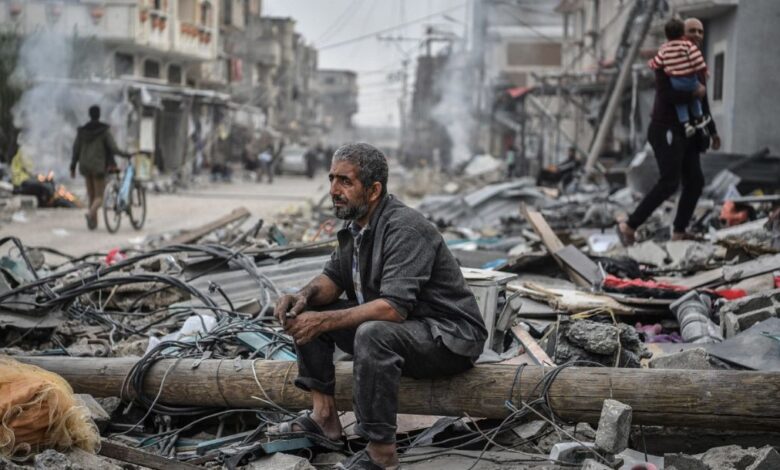What’s happening in Gaza? A desperate humanitarian crisis

A year of conflict in Israel and Gaza
On 7 October 2023, 1,195 people were killed in Israel and 251 taken hostage.
Since then, more than 52,000 people have been killed in Gaza and many more injured. Hostages are still being held, and innumerable survivors are traumatised.
The ceasefire agreement reached in January 2025 gave millions of people in Gaza respite from relentless suffering. Families that were torn apart were reunited or able to put their loved ones to rest.
In March 2025, hostilities renewed, and the ceasefire agreement collapsed.
“No aid trucks means more families struggling to find food, more families unable to access clean water, more families left to live without adequate shelter, and more families left in in desperate need of healthcare,” says Gabriel Karlsson, the British Red Cross’s country cluster manager for the Middle East and North Africa. “Facilitating access to essential, life-saving assistance is an obligation under International Humanitarian Law.”
It is vital that humanitarian aid can enter Gaza, families can be reunited, and lives can be saved.
Palestine Red Crescent response over the past year and a half
For the past year and a half, nearly 1,600 staff and volunteers from the Palestine Red Crescent Society have been working tirelessly to provide life-saving support in Gaza. In the face of immense challenges, losses and risks to their own lives, PRCS has distributed 1.6 million emergency relief items, and provided emergency medical support to over 100,000 people.
“We are doing everything we can with the resources we have,” says Abdul Aziz Abu Aysha, director of the disaster risk management department at the Palestine Red Crescent. “Every day we see more children without the food they need, more patients we can’t treat, and more families who have lost everything. We need an increase in aid now — without this, we will be forced to watch people suffer with no way to help.”
In March 2025, eight Palestine Red Crescent Society medics were killed while on duty in Gaza, while another was killed while on-duty in August. This brings the number of colleagues killed since 2023 to 31, including two in the West Bank.
“In life, [their] uniforms signalled their status as humanitarian workers; they should have protected them. Instead, in death, those red vests became their shrouds,” said Jagan Chapagain, secretary general of the International Federation of the Red Cross. “We cannot allow these deaths – any of these attacks – to become normalised. We must reject the narrative that they are inevitable, or part of the risk of the job.”
Magen David Adom response since 7 October 2023
In the first moments after the attacks on 7 October, Magen David Adom mobilised 1,500 ambulances and over 10,000 first responders. Tragically, six Magen David Adom colleagues were killed while responding.
Since then, Magen David Adom has responded to over one million emergency calls and collected more than 300,000 units of blood. Magen David Adom continues to support communities, particularly those living near the borders with Gaza and Lebanon, by answering emergency calls and dispatching ambulances and paramedics.
The plight of hostages remains a priority
The families of over 200 hostages endured months of terrible suffering. More than a year on, the plight of the hostages taken from Israel remains a priority and we call for their immediate and unconditional release.
When the January 2025 ceasefire agreement was reached, the International Committee of the Red Cross (ICRC) facilitated multiple release operations, reuniting those held hostage with their families. It also facilitated the release of Palestinian detainees.
The ICRC remains ready to continue to implement the agreement so that more families can be reunited.
The British Red Cross reiterates what the International Committee of the Red Cross (ICRC) has said from the outset of the crisis: that those taken hostage must be released immediately, and the ICRC must have access to check on their health, the conditions they are being detained in, and their treatment.
Understanding the region
Map of Israel and the Gaza Strip
Source link

